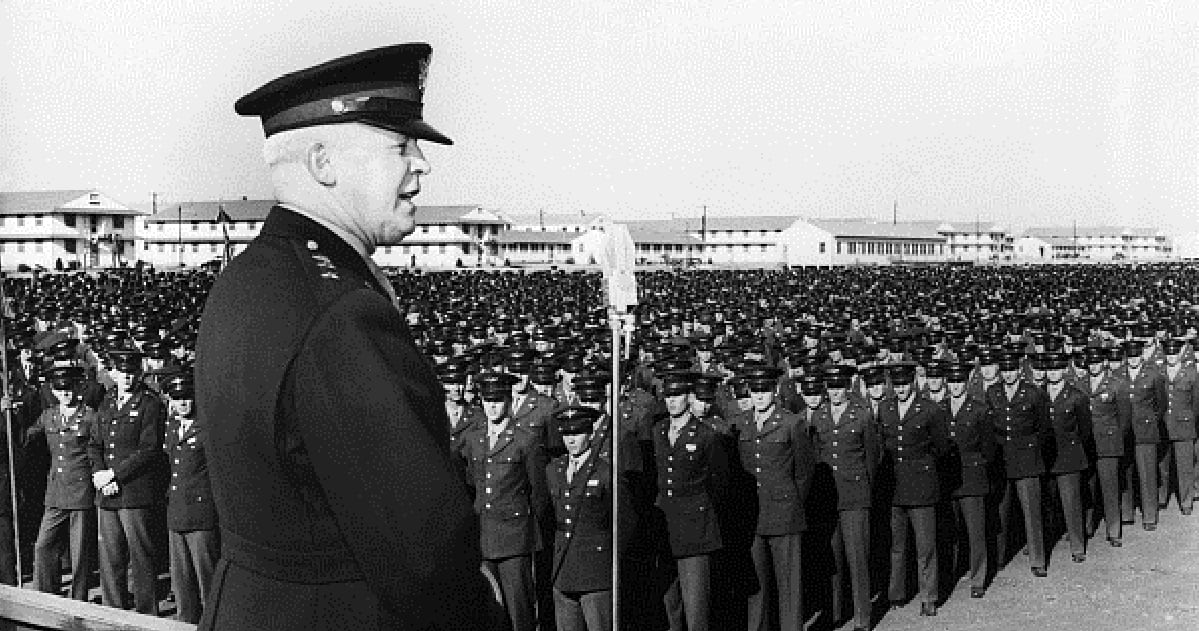Gen. Henry H. “Hap” Arnold’s leadership of the U.S. Army Air Forces in World War II was extraordinary and well-documented. During World War I, however, Arnold served mostly stateside with the Army Air Service, followed by difficult peacetime duty. Frustrated by interservice rivalries in which Army aviation always seemed to come up short, Arnold wrote a series of six books in the mid-1920s intended to highlight the value of military aviation and promote flying to a young audience.
Then-Major Arnold was well-qualified to write such books. A West Point graduate, he had learned to fly in 1911 at the Wright brothers’ school at Huffman Prairie near Dayton, Ohio. He and 2nd Lt. Thomas Milling were the Army’s first certified military pilots and its first flight instructors.
Although Arnold’s books were aimed at teenagers, adults today who are interested in early aviation will find them enjoyable and informative. They feature the adventures of fictional airman Lieutenant Bill Bruce, freshly returned from service in World War I following the Armistice. One volume in the series, Bill Bruce on Border Patrol, opens with a list of all titles in the set under the heading “The Aviator Series – Adventures of a Young Airplane Pilot for Boys 12 to 16 Years.” The other five titles are: “Bill Bruce and the Pioneer Aviators,” “Bill Bruce the Flying Cadet,” “Bill Bruce Becomes an Ace,” “Bill Bruce on Forest Patrol” and “Bill Bruce in the Trans-continental Race.” Most are available via eBay or other online suppliers.
RELATED

The Border Patrol book mainly concerns America’s Southwest, but it also relates to WWI. While not a combat pilot himself, Arnold associated with them and was familiar with the slang, terminology, tactics and aircraft nicknames (such as “DH” for a British de Havilland). To enhance the book’s sense of realism, Arnold incorporated some real-life events, including an unauthorized stunt performed by 2nd Lt. Jimmy Doolittle.

Major Arnold was not alone in his struggle to promote military aviation.
Brig. Gen. Billy Mitchell led the fight for a strong peacetime air defense. By the end of WWI, Mitchell commanded all American air combat units in France and served as chief of the Air Service, Group Armies. But by 1925, his forceful advocacy of expanded air power and criticism of military leaders gained him a reputation as a loose cannon.
Twice that year he was severely disciplined for his accusations and insubordination. In March he was demoted to the rank of colonel and sent to Texas. Then, after the U.S. Navy airship Shenandoah crashed in September, his denunciations of the “almost treasonable administration of the national defense” earned him a court-martial. Judged guilty in December, he resigned from the Army rather than accept another demotion and separation from service for five years. (After Mitchell died in 1936, President Franklin D. Roosevelt raised his rank on the Air Corps retirement list to major general. Ten years later, President Harry S. Truman posthumously awarded him a special Medal of Honor “in recognition of his outstanding pioneer service and foresight in the field of American military aviation.”)
In testimony during Mitchell’s court-martial, Arnold had vigorously supported his fellow officer’s ideas, and he, too, was called on the carpet. In February 1926 he was given one day to choose resignation or court-martial. He opted for the trial and was immediately transferred to Fort Riley in Kansas, the Army preferring to avoid the public spectacle of another court-martial. Arnold gained favorable reviews at his new post, and his future prospects seemed to improve.
With a less hectic command in 1926, Arnold undoubtedly had time to write his books. His son, then in second grade, reportedly had a reading problem, and Hap would read to him each evening from books Mrs. Arnold bought. But Hap found them poorly written, thought he could do a better job and began working on his aviation books. Although earning extra money was probably not on his mind, the book royalties would later cover bills for an operation his son needed; in those days military dependents received very few benefits.
Convinced the battle for a stronger Air Corps was going nowhere, Arnold hoped his books might excite the younger generation enough for the adult public to notice. More important, the youngsters who read his books would come of age a decade later as the nation again prepared for war. When the time arose, thanks in part to Arnold, many of them headed straight for service in the Air Corps.
By 1927 both military and civil aviation were looking up. Advanced aircraft designs, construction of new airfields and Charles Lindbergh’s solo transatlantic flight in May helped boost aviation’s image. Yet as the United States hurtled toward another world war, the Air Corps was still on a starvation diet of planes and personnel.
In 1938 Arnold became chief of the Army Air Corps, and in 1941 was made commanding general of the newly renamed Army Air Forces. Throughout WWII he was on duty most of his waking hours, seven days a week. Several heart attacks interrupted that grind, but Arnold persisted before retiring in 1946. In 1947 he witnessed his and Mitchell’s ideas come to full fruition with the establishment of the U.S. Air Force as a separate service.
From the birth of heavier-than-air flight in 1903 until Arnold’s death in 1950, his career closely paralleled the history of American military aviation. Arnold’s military service certainly featured its share of ups and downs, but his legacy in the annals of aviation history is undeniable. Few are aware, though, that among his important contributions were six books that helped spark dreams of flight in countless young Americans.
This article originally appeared in the July 2018 issue of Aviation History, a sister publication.




